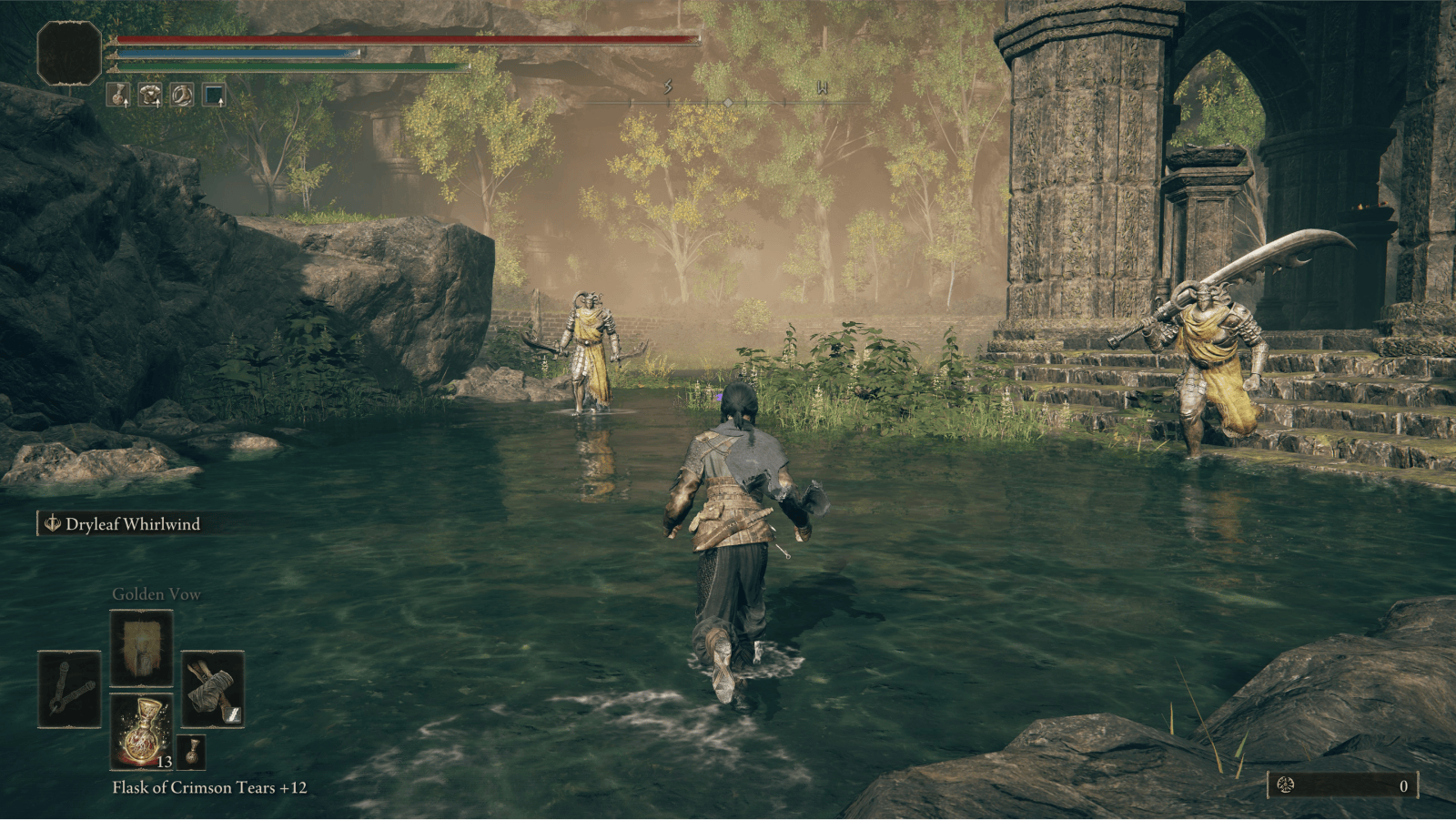When does a game system cause too much negative friction for the player? And when is that friction outside of the philosophy of its intended design?
Like the games that have come before it, Elden Ring follows a strongly opinionated design philosophy. Give the player precise controls and challenges to master. Incentivize the player to discover and explore systems without holding the player's hand at every step. So it's curious that there are a few places where a system doesn't quite match this philosophy, or impedes the player in odd ways. And one system that's at the forefront of player frustration is the camera. So much so that the souls community commonly refers to it as another "boss" that you have to master.
But why is that?
My own experience with Elden Ring piqued my curiosity to figure out why, and, how the player experience could potentially be improved. And I suspect it's largely two pieces that contribute to player frustration: the experience of locking on to enemies, and the behavior of the camera once it's locked on. However, I'm going to focus on the lock-on experience for the time being as the latter is a far more challenging discussion to undertake.
The Current Lock-On Experience
Before attempting any kind of improvements, we first need to understand what currently happens and how that relates to the needs of the player in combat.
During play testing, I found what appears to be three main factors that determine what gets locked-on to. Whether creatures
- are in the frontal cone of the player (the direction the character model is facing);
- are in the view of the player's camera (the view seen by the player); and
- the distance the creature is to the player.
It should also be noted that how close a creature is to the center of the frontal cone or player camera also influences what gets locked on to.
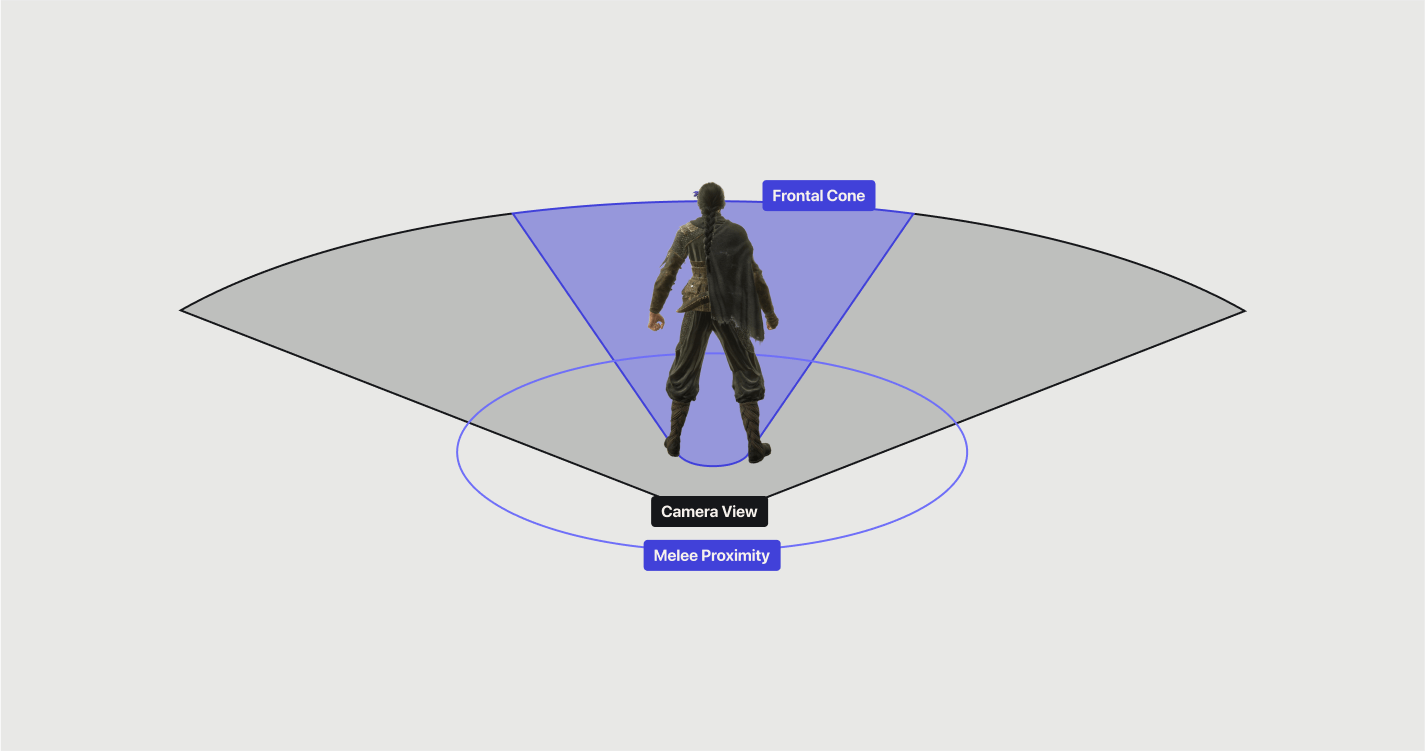
In addition to this calculation, when a player attempts a lock-on the camera will also perform a second function. It will re-center the camera to the same direction the character model is facing, and even rotate to face the new target if successful. And this has a big effect on the overall experience.
As a result of these factors, a few behaviors occur more frequently when trying to lock on:
- Creatures closer to the player tend to be preferred.
- Creatures that are within the frontal cone are generally preferred.
- Creatures outside the player camera are largely ignored, unless they are in the frontal cone.
- When a situation is unclear, a best guess is made. And there's a preference towards creatures that are closer to the center of the frontal cone, close to the player, and in camera.
That sounds relatively straightforward, but there's a lot more to it in practice.
What Makes this Experience Frustrating
Elden Ring's broader design philosophy is about the clear intentionality of its systems. The precise choreography of enemies that must be learned to be beaten. Or how the player's knowledge of mechanics can be combined to create significant advantages.
The lock-on system — while having relatively clear rules — doesn't have the same feeling of intentionality when experienced by the player. And this is most clear when looking at the central purpose of any lock-on system: to aid the player in combat situations.
Consider the following: I (the player) have several enemies around me. Some are passive. Some are aggressing towards me. And some are attacking me now. Before making any combat decisions, I have to consider a few important questions:
- Who is currently a threat?
- What is the most dangerous creature around me?
- What am I choosing to look at?
- Am I currently being attacked?
- Am I about to get wrecked by that Horned Warrior (yes)?
Once I've evaluated the situation and choose to lock on to an enemy, I probably have a result that I'm hoping for. And it's here that unfortunately a number undesirable results can (and do) happen, showcased by a few different situations.

Situation 1
The character model is facing a passive enemy far away while the camera is focused on an enemy who is closer and about to attack the player. And in this situation it's very likely for the passive enemy in the frontal cone to be targeted.
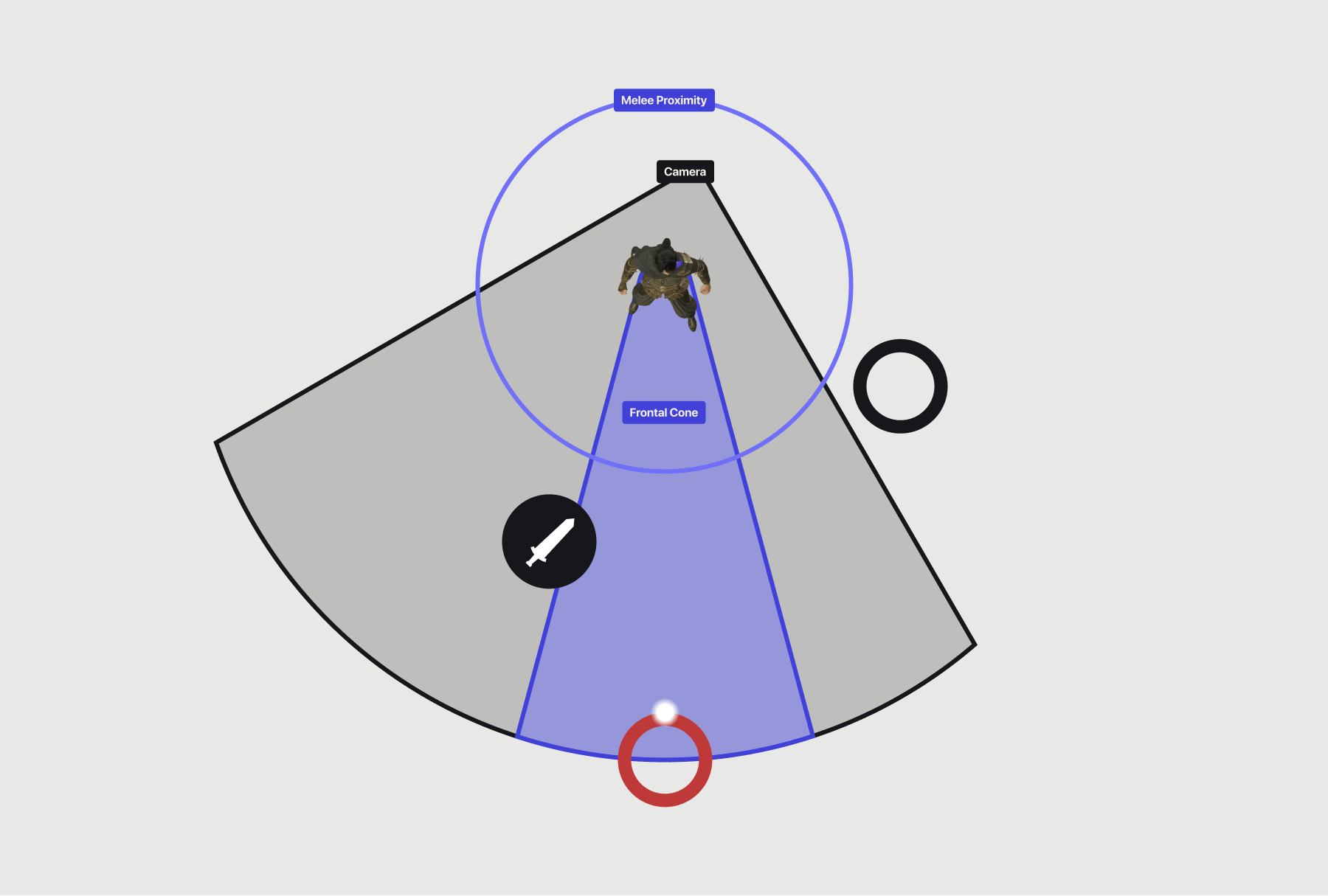
A classic example of this is "accidentally" locking on to a Sheep (a non-aggressive creature) in the distance when you're trying to fight a Deathbird (a dangerous field boss). And I've definitely experienced this (or a variation of it) one more than once.
Situation 2
Two enemies are in the camera and one of them is currently attacking. The player is tracking this attacking enemy with the camera while running away. There is also another enemy in the frontal cone of the player, but off-camera and in melee range. Here, the likely lock-on target is this enemy in front of the character.
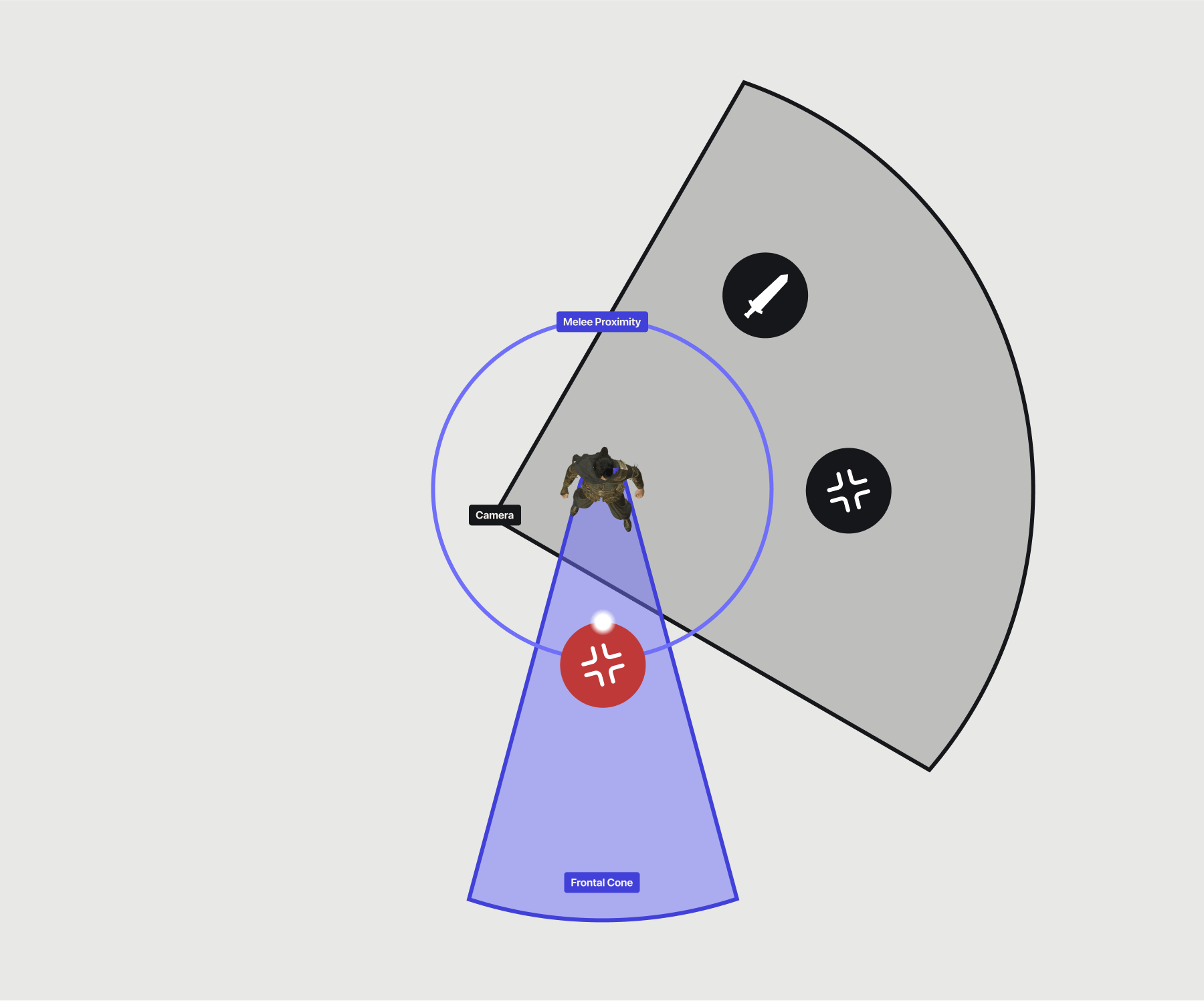
Situation 3
An enemy is in the frontal cone, but is fully obstructed from the player's view. In addition there are enemies attacking the player, but further from the center of the players view. In a surprise twist, the obstructed enemy may actually be targeted.
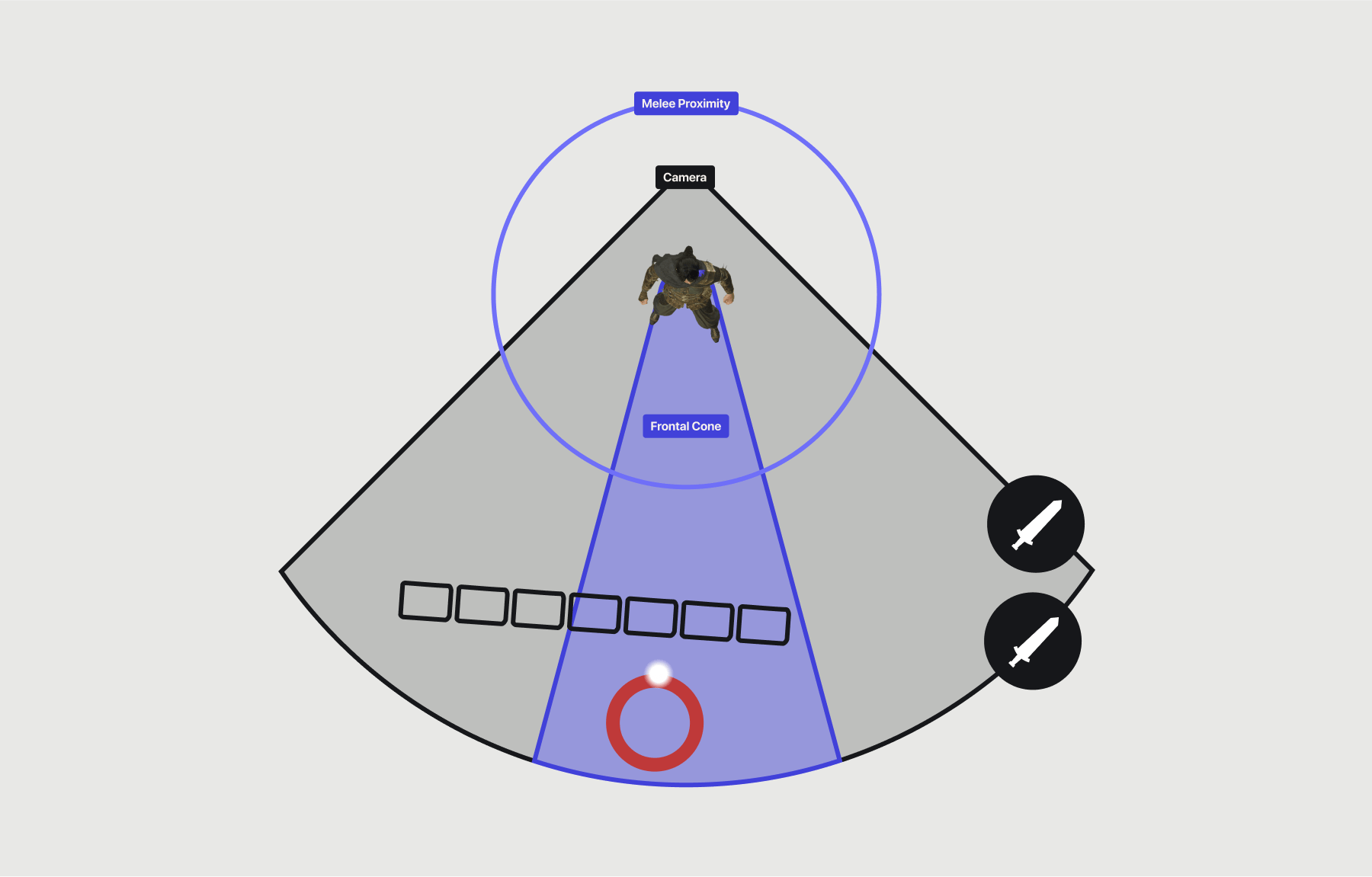
Situation 4
Multiple enemies are attacking the player at the same time. Two are in melee range, both equidistant from the center of the frontal cone, but one is a more threatening enemy that will do significantly more damage if the attack lands. In this situation, either of these two melee-ranged enemies may be targeted.
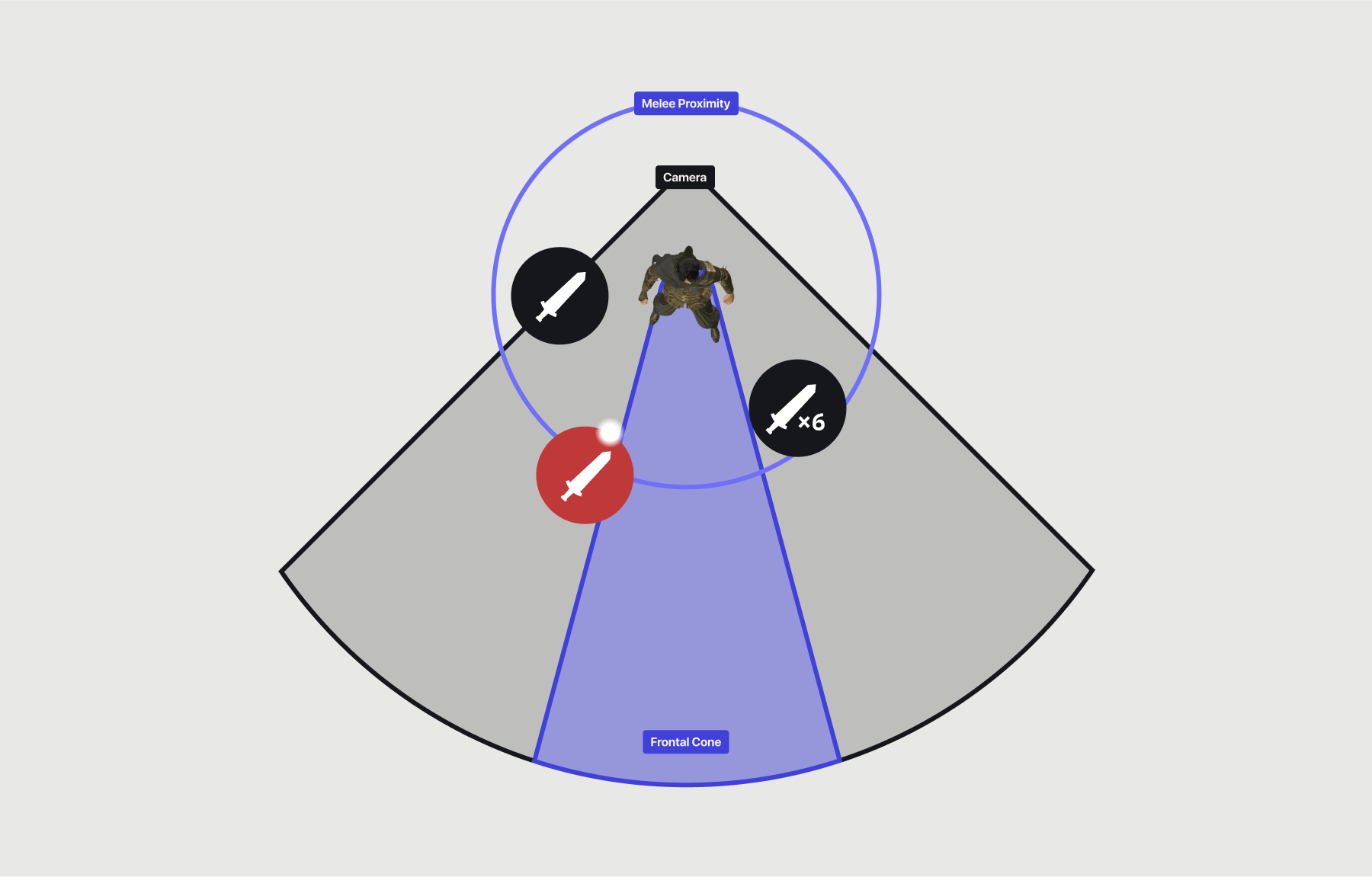
From the player perspective, all of these outcomes either produce inconsistent results or may not match their expectations. So what could we do to fix some of these problems? The answer is actually pretty simple.
Include more conditions and adjust the logical hierarchy that affects how calculations are made.
Organizing the Solution
In reviewing the player experience, I touched on a number of properties that we could potentially use to help make the lock-on system more helpful (aggression, damage output, etc…). But because of Elden Ring's design philosophy these properties can't be used generously. The need to align with some important rules:
- Deliberate player choices should not be overridden by a guess that a system might make.
- The system should not overly-guide or automate decisions the player has to make, so that other challenges the game presents aren't trivialized.
- The system should be predictable enough to be learned by the player (without much effort).
Doing so ensures that the system treats player actions as deliberate choices and fills out the remaining situations that are progressively less important (or clear) to the player.
The New Lock-On System
When I began working on this new experience, I realized that the Elden Ring already had a lot going for it. And many of the tools that already exist (or I'm guessing do) could still be used, including:
- the targeting sphere, where locking on is valid.
- the frontal cone, that matches the character model's point of view.
- what I'll call the snapping area, where an attempted target lock is allowed to snap to a new position.
- the crosshair, used to calculate centricity.
- the lock-on area of creatures, which is a combination of the size of the creature model and a tolerance bubble the smaller the model is (for a reliable target size).
- the re-centering mechanic, but flipped so that the character model now centers on the camera view (and not vice versa).


In addition to these tools, a few creature properties will help the player in certain situations.
- Distance from Crosshair
- The distance (in radians) between the lock-on area and the crosshair.
- Distance from the Player
- The distance (in meters) between the creature and the player.
- Level of Obstruction
- How much a creature is obstructed by objects in the world (0–1).
- Level of Aggression
- A system that classifies how much aggression a creature is showing. Levels are either passive (1), aggroed (2), aggressing(3), or attacking (4).
- Threat Level
- The difficulty level of the creature. As a rough example, the difference between a Spirit Jellyfish (1), a Revenant (6), and a Deathbird (10).
- Damage Output
- The amount of damage the current creature's attack will inflict.
In order for all of these tools to work however, they also need to follow the right logic — one guided by the three main outcomes we want to achieve (player choice, minimal help, system predictability).
The first part of the logic sets the initial scope for a more detailed analysis:

Once creatures are in the locking sphere, the logic depends on whether creatures are in or out of the camera:
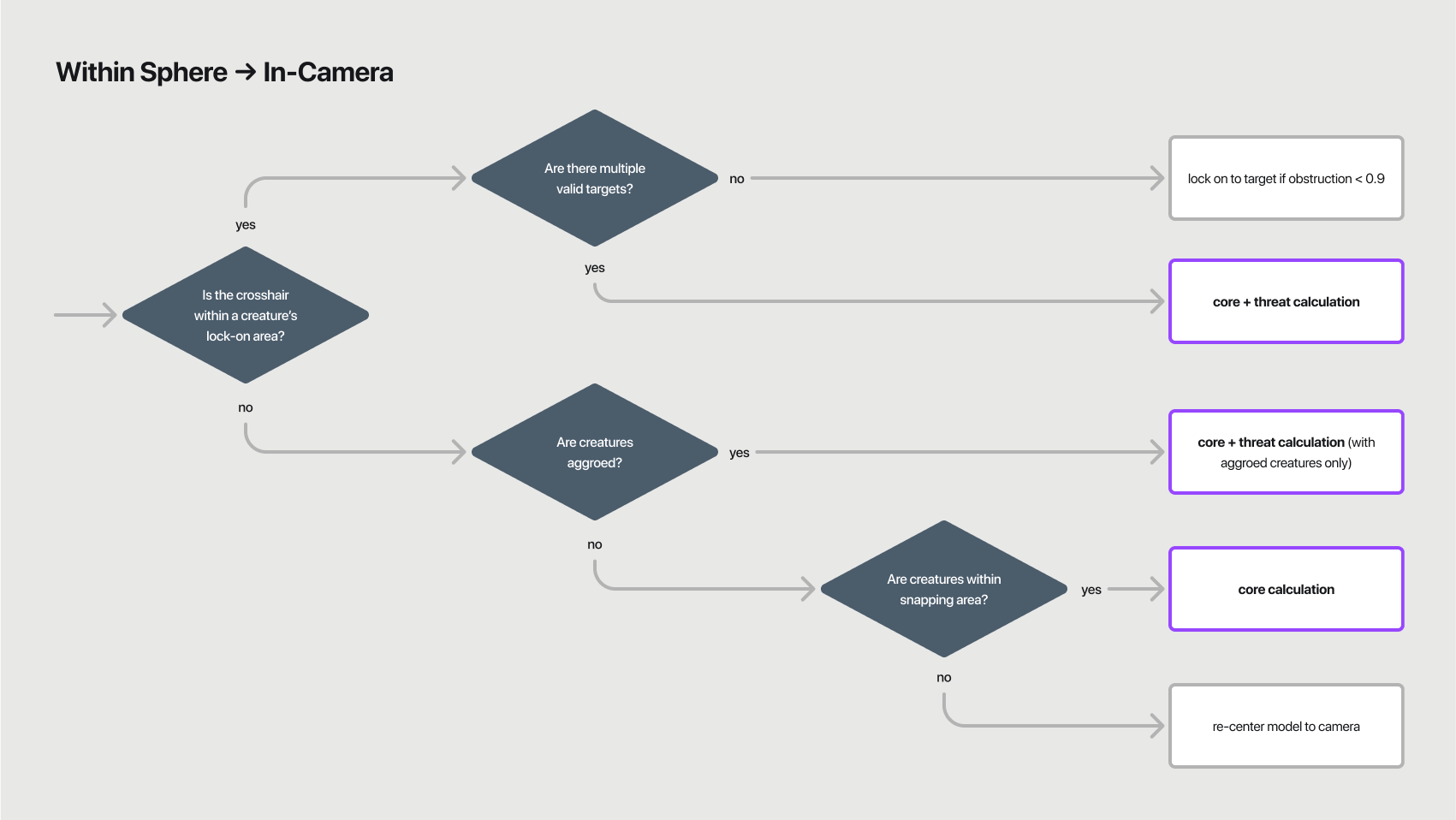

And when a situation is not entirely clear, a few different calculations need to be made.

This new logic and methods of calculation for competing outcomes helps the system in a number of different ways. First and foremost it strongly prefers player behavior over guessing. But it’s also designed so that as situations get less clear, the more the system aids the player. And there are a couple of major improvements for players, including:
- Passive creatures will no longer be "accidentally" targeted while others are more aggroed to the player (Situation 1).
- The re-centering mechanic will no longer produce undesirable results (Situation 2).
- Placing the center of the player camera (crosshair) on an enemy will actually target that enemy (something that doesn’t always happen currently).
- Obstructed enemies will no longer be viable targets (Situation 3).
- In more ambiguous situations, more threatening enemies may be given preference to help the player react with more precision (Situation 4).
It’s also worth noting that de-prioritizing calculations is important as it could be very easy for these new character properties to automate player decisions in this system. Something that might be appropriate in another game, but probably not one by From Software.
Wrapping Up
Elden Ring is such an interesting and fantastic game, and I'll probably return to it in the future. But before I end, there is one disclaimer about this entire exploration I should make.
As much as I believe these changes would improve the player experience, they really are only a best guess. And proper interviews and play testing would be essential to be really sure of their efficacy.
